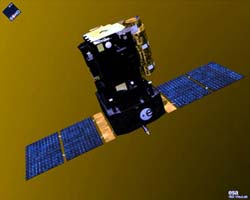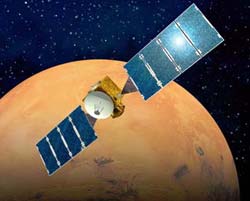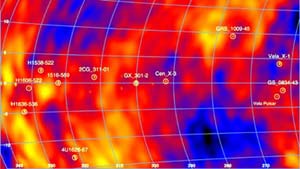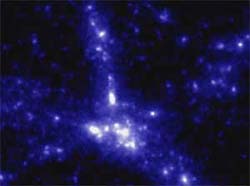This area deals with the fundamental laws and building blocks of nature and how they interact, the properties and the behavior of matter, and research into space and time and their structures.
innovations-report provides in-depth reports and articles on subjects such as astrophysics, laser technologies, nuclear, quantum, particle and solid-state physics, nanotechnologies, planetary research and findings (Mars, Venus) and developments related to the Hubble Telescope.

While scientists and aurora spotters marvel at the explosions on the Sun, everyone responsible for the hundreds of satellites that serve human needs, from weather observations to car navigation, wishes that these potentially damaging events were more predictable.
So do the astronauts aboard the International Space Station, who recently had to shelter from energetic particles flung out by the most powerful solar flare ever recorded. Now, from space observations of the Sun going back more than

Six years ago Cornell University researchers built the world’s smallest guitar — about the size of a red blood cell — to demonstrate the possibility of manufacturing tiny mechanical devices using techniques originally designed for building microelectronic circuits.
Now, by “playing” a new, streamlined nanoguitar, Cornell physicists are demonstrating how such devices could substitute for electronic circuit components to make circuits smaller, cheaper and more energy-efficient.

Unique Five-Week VLT Study of the Polarisation of a Gamma-Ray Burst Afterglow
“Gamma-ray bursts (GRBs)” are certainly amongst the most dramatic events known in astrophysics. These short flashes of energetic gamma-rays, first detected in the late 1960’s by military satellites, last from less than one second to several minutes.
GRBs have been found to be situated at extremely large (“cosmological”) distances. The energy released in a few seconds during such an event is lar

Europe’s mission to the Red Planet, Mars Express, is on schedule to arrive at the planet on Christmas Day, 2003.
The lander, Beagle 2, is due to descend through the Martian atmosphere and touch down also on 25 December.
Mars Express is now within 20 million kilometres of the Red Planet and the next mission milestone comes on 19 December, when Mars Express will release Beagle 2. The orbiter spacecraft will send Beagle 2 spinning towards the planet on a precise trajectory.

ESA’s gamma-ray observatory Integral is making excellent progress, mapping the Galaxy at key gamma-ray wavelengths.
It is now poised to give astronomers their truest picture yet of recent changes in the Milky Way’s chemical composition. At the same time, it has confirmed an ’antimatter’ mystery at the centre of the Galaxy.
Since its formation from a cloud of hydrogen and helium gas, around 12 000 million years ago, the Milky Way has gradually been enriched

The “dark matter” that comprises a still-undetected one-quarter of the universe is not a uniform cosmic fog, says a University of California, Berkeley, astrophysicist, but instead forms dense clumps that move about like dust motes dancing in a shaft of light.
In a paper submitted this week to Physical Review D, Chung-Pei Ma, an associate professor of astronomy at UC Berkeley, and Edmund Bertschinger of the Massachusetts Institute of Technology (MIT), prove that the motion of dark matter clum